The Insights, “Comfort” Effect and Bottleneck Breakthrough of “E-Commerce Temperature” during the COVID-19 Pandemic
Abstract
1. Introduction
2. Literature Review
2.1. Empathy in E-Commerce Services
2.2. Quasi-Natural Experiments and Text Mining
3. Methods and Materials
3.1. Solving Process of Research Questions
3.2. LDA Topic Model
3.3. Distributed Sentiment Analysis Based on Word2vec
3.4. Difference-In-Differences Model
3.5. Social Network Analysis
3.6. Data Collection and Text Quantification
4. Results
4.1. Insight into the Characteristics of “E-Commerce Temperature”
4.2. Comfort Effect Test of “E-Commerce Temperature”
4.2.1. Baseline and Quantile Regression
4.2.2. Robustness Testing
4.3. Identifying and Breaking through “Comfort” Bottlenecks
5. Discussion
6. Conclusions
Author Contributions
Funding
Institutional Review Board Statement
Informed Consent Statement
Data Availability Statement
Acknowledgments
Conflicts of Interest
References
- Gu, S.; Ślusarczyk, B.; Hajizada, S.; Kovalyova, I.; Sakhbieva, A. Impact of the COVID-19 pandemic on online consumer purchasing behavior. J. Theor. Appl. Electron. Commer. Res. 2021, 16, 2263–2281. [Google Scholar] [CrossRef]
- Yang, S.; Ning, L.; Jiang, T.; He, Y. Dynamic impacts of COVID-19 pandemic on the regional express logistics: Evidence from China. Transp. Policy 2021, 111, 111–124. [Google Scholar] [CrossRef]
- Festinger, L. A theory of social comparison processes. Hum. Relat. 1954, 7, 117–140. [Google Scholar] [CrossRef]
- Zhou, L.; Fan, J.H. Shaping trust: The scene framework and emotional logic of live online e-commerce. J. Southwest Minzu Univ. 2021, 42, 142–147. [Google Scholar]
- Scutariu, A.L.; Șuşu, Ș.; Huidumac-Petrescu, C.E.; Gogonea, R.M. A Cluster Analysis Concerning the Behavior of Enterprises with E-Commerce Activity in the Context of the COVID-19 Pandemic. J. Theor. Appl. Electron. Commer. Res. 2021, 17, 47–68. [Google Scholar] [CrossRef]
- Truong, D.; Truong, M.D. How do consumers change their purchasing behaviors during the COVID-19 pandemic? J. Retail. Consum. Serv. 2022, 67, 102963. [Google Scholar] [CrossRef]
- Escudero-Santana, A.; Muñuzuri, J.; Lorenzo-Espejo, A.; Muñoz-Díaz, M.L. Improving E-Commerce Distribution through Last-Mile Logistics with Multiple Possibilities of Deliveries Based on Time and Location. J. Theor. Appl. Electron. Commer. Res. 2022, 17, 507–521. [Google Scholar] [CrossRef]
- Holguín-Veras, J.; Pérez, N.; Jaller, M.; Van Wassenhove, L.N.; Aros-Vera, F. On the appropriate objective function for post-disaster humanitarian logistics models. J. Oper. Manag. 2013, 31, 262–280. [Google Scholar] [CrossRef]
- Parasuraman, A.; Zeithaml, V.A.; Berry, L.L. A conceptual model of service quality and its implications for future research. J. Mark. 1985, 49, 41–50. [Google Scholar] [CrossRef]
- Murray, J.; Elms, J.; Curran, M. Examining empathy and responsiveness in a high-service context. Int. J. Retail. Distrib. Manag. 2019, 47, 1364–1378. [Google Scholar] [CrossRef]
- Umasuthan, H.; Park, O.J.; Ryu, J.H. Influence of empathy on hotel guests’ emotional service experience. J. Serv. Mark. 2017, 31, 618–635. [Google Scholar] [CrossRef]
- Yoon, N.; Lee, H.K. AI recommendation service acceptance: Assessing the effects of perceived empathy and need for cognition. J. Theor. Appl. Electron. Commer. Res. 2021, 16, 1912–1928. [Google Scholar] [CrossRef]
- Grabich, S.C.; Robinson, W.R.; Engel, S.M.; Konrad, C.E.; Richardson, D.B.; Horney, J.A. County-level hurricane exposure and birth rates: Application of difference-in-differences analysis for confounding control. Emerg. Themes Epidemiol. 2015, 12, 19. [Google Scholar] [CrossRef] [PubMed]
- Sakai, Y.; Wakamatsu, H.; Miyata, T. Impact of the Great East Japan Earthquake on the oyster market: A difference-in-differences estimation. Fish. Sci. 2018, 84, 1109–1118. [Google Scholar] [CrossRef]
- Eguchi, A.; Yoneoka, D.; Shi, S.; Tanoue, Y.; Kawashima, T.; Nomura, S.; Makiyama, K.; Uryu, S.; Sawada, M.; Kawamura, Y.; et al. Effect of emergency declaration on mental health during the COVID-19 pandemic in Japan: A social network service-based difference-in-differences approach. Sci. Prog. 2021, 104. [Google Scholar] [CrossRef]
- Zhang, C.; Ma, H.M. Introduction of the marketplace channel under logistics service sharing in an e-commerce platform. Comput. Ind. Eng. 2022, 163, 107724. [Google Scholar] [CrossRef]
- Pappas, I.O.; Kourouthanassis, P.E.; Giannakos, M.N.; Chrissikopoulos, V. Sense and sensibility in personalized e-commerce: How emotions rebalance the purchase intentions of persuaded customers. Psychol. Mark. 2017, 34, 972–986. [Google Scholar] [CrossRef]
- Wu, T.; Liu, X.; Qin, J.; Herrera, F. An interval type-2 fuzzy Kano-prospect-TOPSIS based QFD model: Application to Chinese e-commerce service design. Appl. Soft Comput. 2021, 111, 107665. [Google Scholar] [CrossRef]
- Bataoui, S. When e-commerce becomes more human by transposing the hospitality concept to merchant websites. J. Retail. Consum. Serv. 2022, 65, 102831. [Google Scholar] [CrossRef]
- Yang, X.R.; Du, R. Impacts of IT-enabled knowledge sharing in virtual communities on service quality of cross-border e-commerce. Chin. J. Manag. Sci. 2022, 30, 226–233. [Google Scholar]
- Lim, M.K.; Li, Y.; Song, X. Exploring consumer satisfaction in cold chain logistics using a text mining approach. Ind. Manag. Data Syst. 2021, 121, 2426–2449. [Google Scholar] [CrossRef]
- Hsiao, Y.H.; Chen, M.C.; Liao, W.C. Logistics service design for cross-border E-commerce using Kansei engineering with text-mining-based online content analysis. Telemat. Inform. 2017, 34, 284–302. [Google Scholar] [CrossRef]
- Yi, Y.C.; Shi, Y.X. Research on the logistics service quality improvement of fresh food e-commerce under the normalization of the COVID-19 epidemic. J. Jiangxi Univ. Financ. Econ. 2022, 1, 65–75. [Google Scholar]
- DiNardo, J. Natural experiments and quasi-natural experiments. In Microeconometrics; Palgrave Macmillan: London, UK, 2010; pp. 139–153. [Google Scholar]
- Dalla Pellegrina, L.; De Michele, A.; Di Maio, G.; Landoni, P. Fostering savings by commitment: Evidence from a quasi-natural experiment at the small enterprise foundation in South Africa. World Dev. 2021, 148, 105660. [Google Scholar] [CrossRef]
- Huo, W.; Qi, J.; Yang, T.; Liu, J.; Liu, M.; Zhou, Z. Effects of China’s pilot low-carbon city policy on carbon emission reduction: A quasi-natural experiment based on satellite data. Technol. Forecast. Soc. Chang. 2022, 175, 121422. [Google Scholar] [CrossRef]
- Luo, C.Y.; Si, C.X. Does online education widen the gap between students with different family conditions? a quasi-natural experiment based on covid-19. J. Financ. Econ. 2020, 46, 4–18. [Google Scholar]
- Kim, Y.; Kang, M.; Jeong, S.R. Text mining and sentiment analysis for predicting box office success. KSII Trans. Internet Inf. Syst. (TIIS) 2018, 12, 4090–4102. [Google Scholar]
- Guan, P.; Wang, Y.F. Identifying optimal topic numbers from Sci-Tech information with LDA model. New Technol. Libr. Inf. Serv. 2016, 32, 42–50. [Google Scholar]
- Mimno, D.M.; Wallach, H.M.; Talley, E.M.; McCallum, A. Optimizing Semantic Coherence in Topic Model. Available online: https://Aclanthology.Org/D11-1024.Pdf (accessed on 20 May 2022).
- Wang, Y.; Zhu, J.; Wang, Z.; Bai, F.; Gong, J. Review of applications of natural language processing in text sentiment analysis. J. Comput. Appl. 2022, 42, 1011–1020. [Google Scholar]
- Atmaja, B.T.; Akagi, M. Two-stage dimensional emotion recognition by fusing predictions of acoustic and text networks using SVM. Speech Commun. 2021, 126, 9–21. [Google Scholar] [CrossRef]
- Chidambarathanu, K.; Shunmuganathan, K.L. Predicting user preferences on changing trends and innovations using SVM based sentiment analysis. Clust. Comput. 2019, 22, 11877–11881. [Google Scholar] [CrossRef]
- Mikolov, T.; Chen, K.; Corrado, G.; Dean, J. Efficient Estimation of Word Representations in Vector Space. Available online: https://Arxiv.Org/Pdf/1301.3781.Pdf (accessed on 28 March 2022).
- Fu, J.L.; Sun, D.Y.; Jin, X.; Wang, S.Y. Review of the research on the terrorist networks based on social network analysis. Syst. Eng.-Theory Pract. 2013, 33, 2177–2186. [Google Scholar]
- Ping, L.; Zong, L.Y. Research on microblog information dissemination based on SNA: A case study with Sina Microblog. Doc. Inf. Knowl. 2010, 6, 6. [Google Scholar]
- Qian, X.; Kang, J.; Tang, Y.; Cao, X. Industrial policy, efficiency of capital allocation and firm’s total factor productivity: Evidence from a natural experiment in China. China’s Ind. Econ. 2018, 35, 42–59. [Google Scholar]
- Xie, Q.J.; Gao, J.; Su, J. Research on the Impact of Government Cooperation on Inter-Regional Collaborative Innovation Based on the Quasi-Natural Experiment. Chin. J. Manag. 2021, 18, 1612. [Google Scholar]
- La Ferrara, E.; Chong, A.; Duryea, S. Soap operas and fertility: Evidence from Brazil. Am. Econ. J. Appl. Econ. 2012, 4, 1–31. [Google Scholar] [CrossRef]
- Song, H.; Sun, Y.J.; Chen, D.K. Assessment for the effect of government air pollution control policy: Empirical evidence from “low-carbon city” construction in China. J. Manag. World 2019, 35, 95–108. [Google Scholar]
- Fang, H.; Zhao, S.L. Has the Belt and Road Initiative promoted the upgrading of China’s industrial structure? A difference-in-differences test based on 285 cities of China. Ind. Econ. Res. 2021, 1, 29–42. [Google Scholar]
- Muangmee, C.; Kot, S.; Meekaewkunchorn, N.; Kassakorn, N.; Khalid, B. Factors Determining the Behavioral Intention of Using Food Delivery Apps during COVID-19 Pandemics. J. Theor. Appl. Electron. Commer. Res. 2021, 16, 1297–1310. [Google Scholar] [CrossRef]
- Restuputri, D.P.; Indriani, T.R.; Masudin, I. The effect of logistic service quality on customer satisfaction and loyalty using kansei engineering during the COVID-19 pandemic. Cogent Bus. Manag. 2021, 8, 1906492. [Google Scholar] [CrossRef]
- Andrews, E.; Berghofer, K.; Long, J.; Prescott, A.; Caboral-Stevens, M. Satisfaction with the use of telehealth during COVID-19: An integrative review. Int. J. Nurs. Stud. Adv. 2020, 2, 100008. [Google Scholar] [CrossRef] [PubMed]
- Torabi, M.; Bélanger, C.H. Influence of Online Reviews on Student Satisfaction Seen through a Service Quality Model. J. Theor. Appl. Electron. Commer. Res. 2021, 16, 3063–3077. [Google Scholar] [CrossRef]
- Bueno, S.; Gallego, M.D. eWOM in C2C Platforms: Combining IAM and Customer Satisfaction to Examine the Impact on Purchase Intention. J. Theor. Appl. Electron. Commer. Res. 2021, 16, 1612–1630. [Google Scholar] [CrossRef]
- Xiao, W.J. The Influence and Countermeasures of Outbreak Epidemic on the Circulation of Fresh Agricultural Products from the Perspective of Risk Society. Rev. Econ. Manag. 2020, 36, 25–33. [Google Scholar]
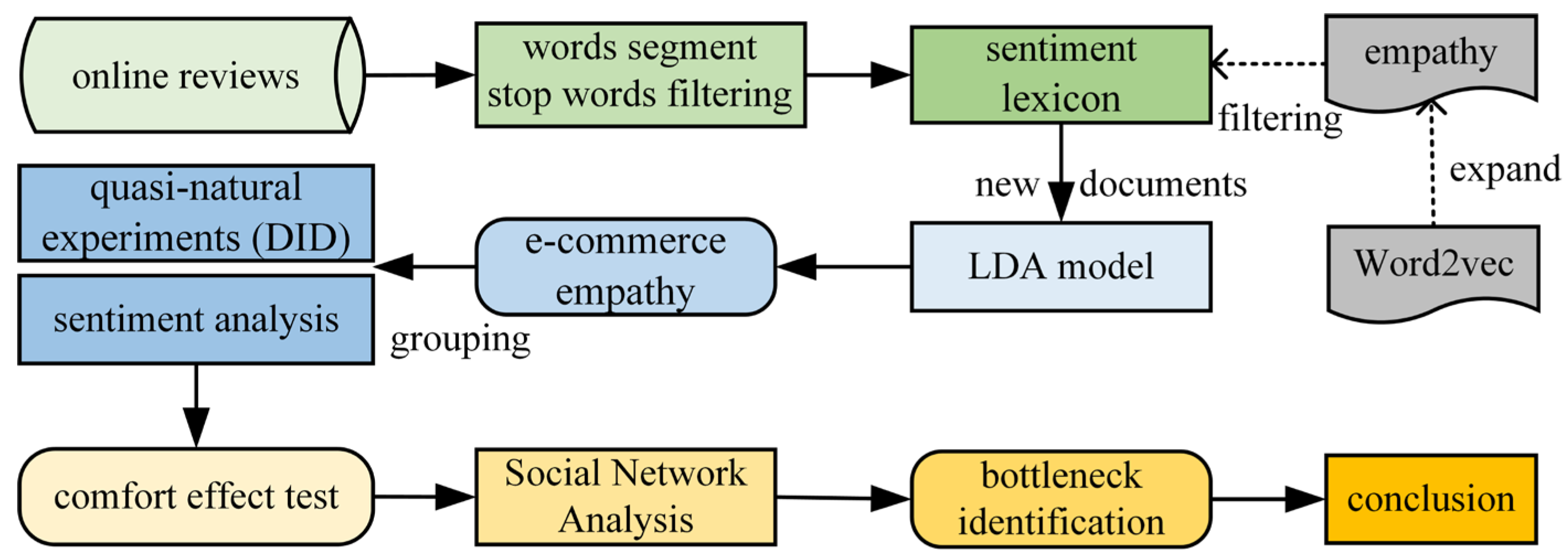
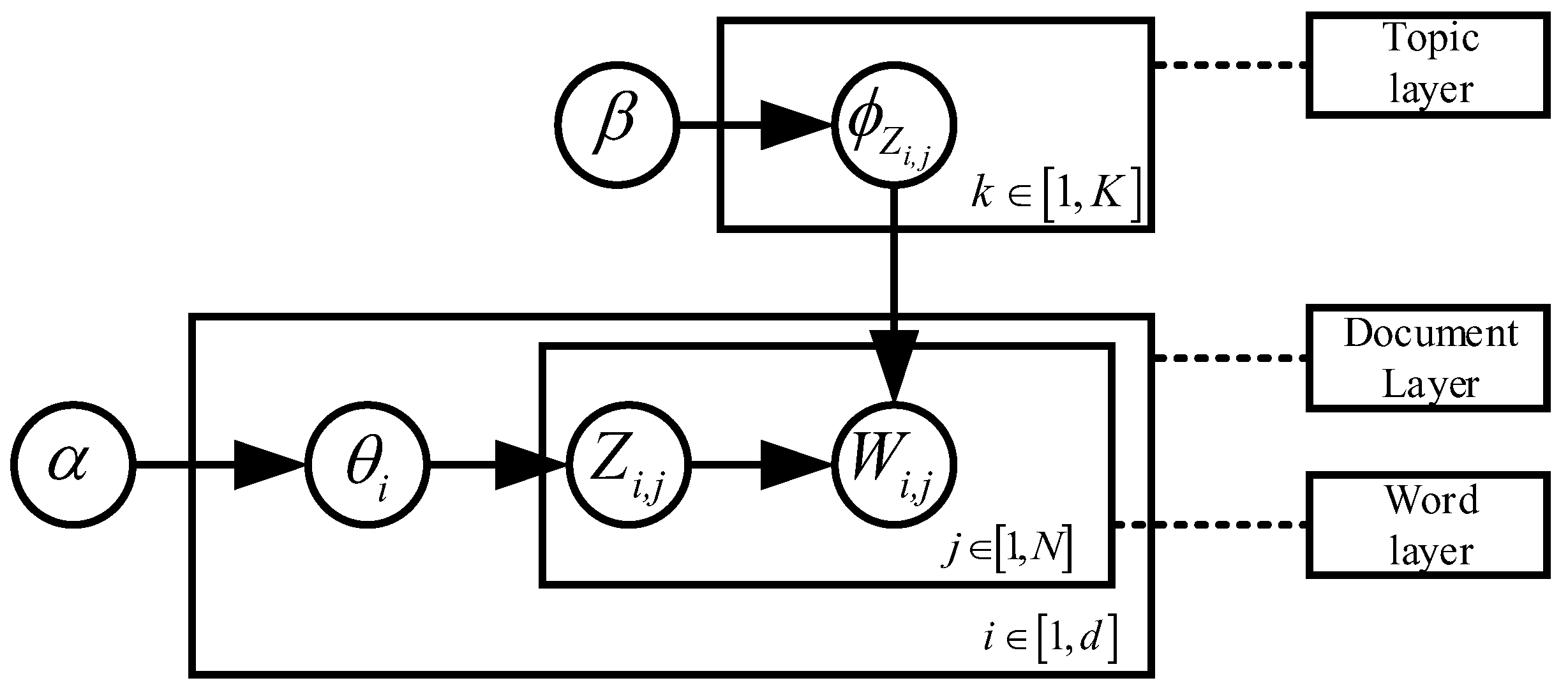
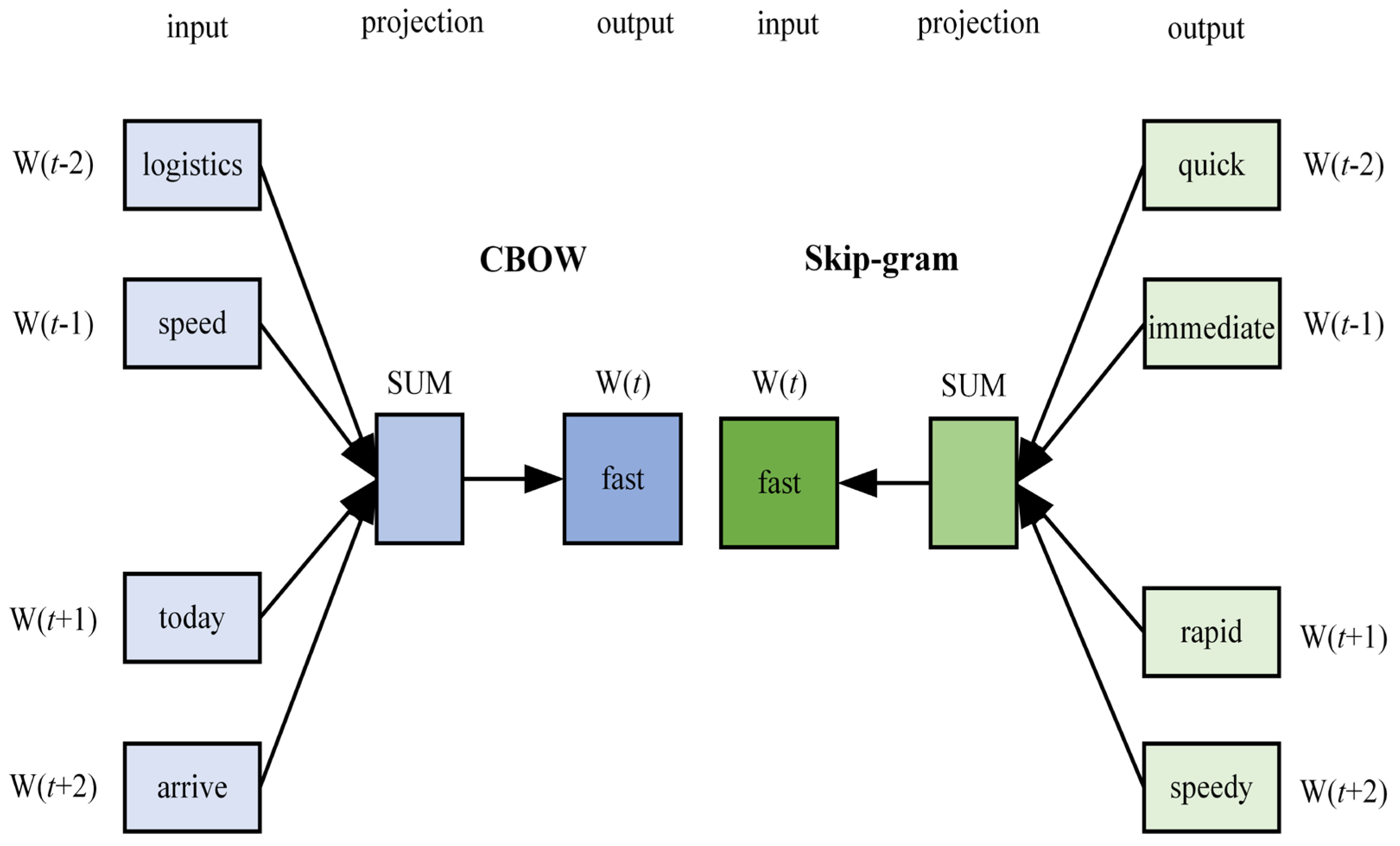


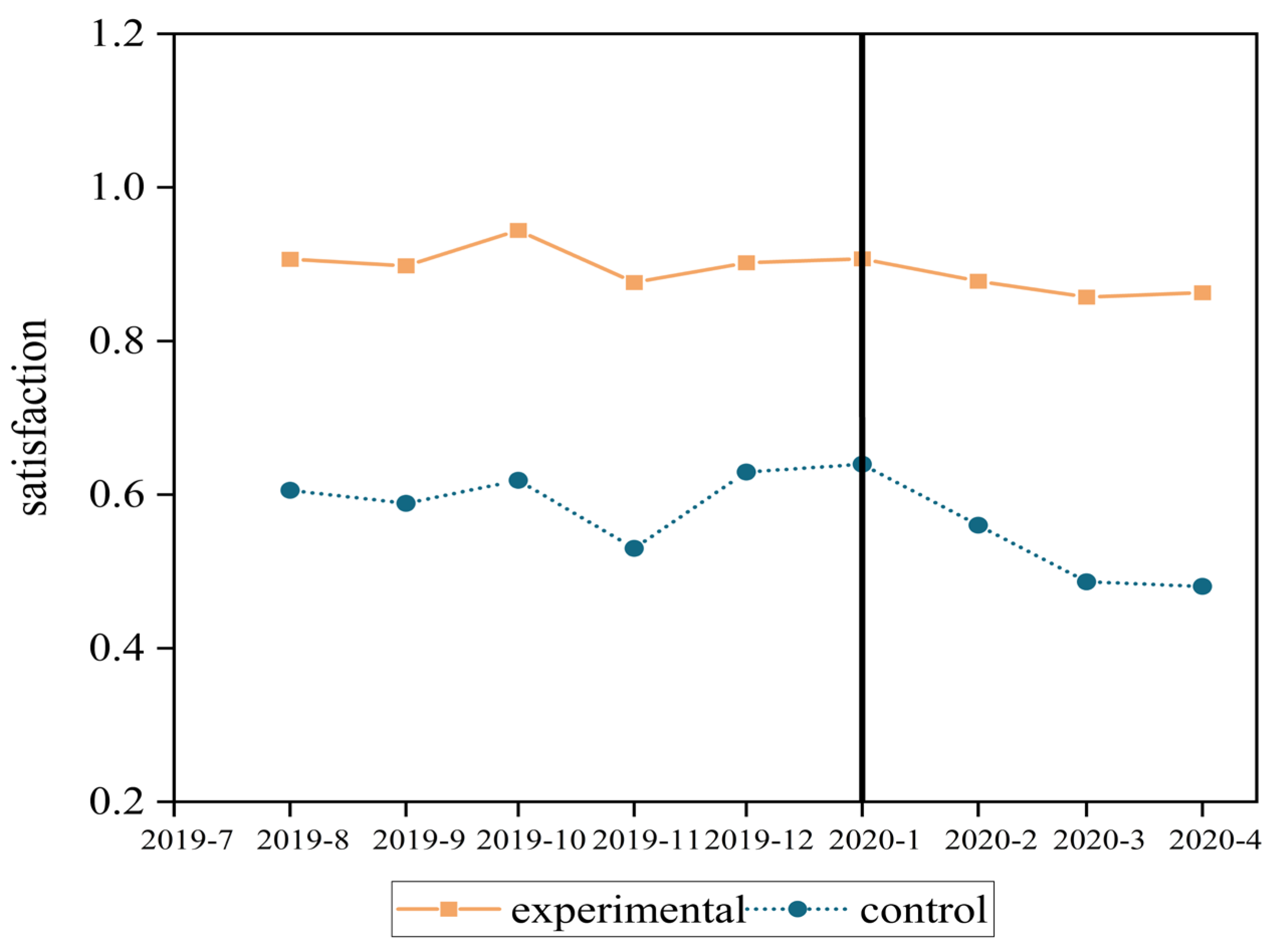



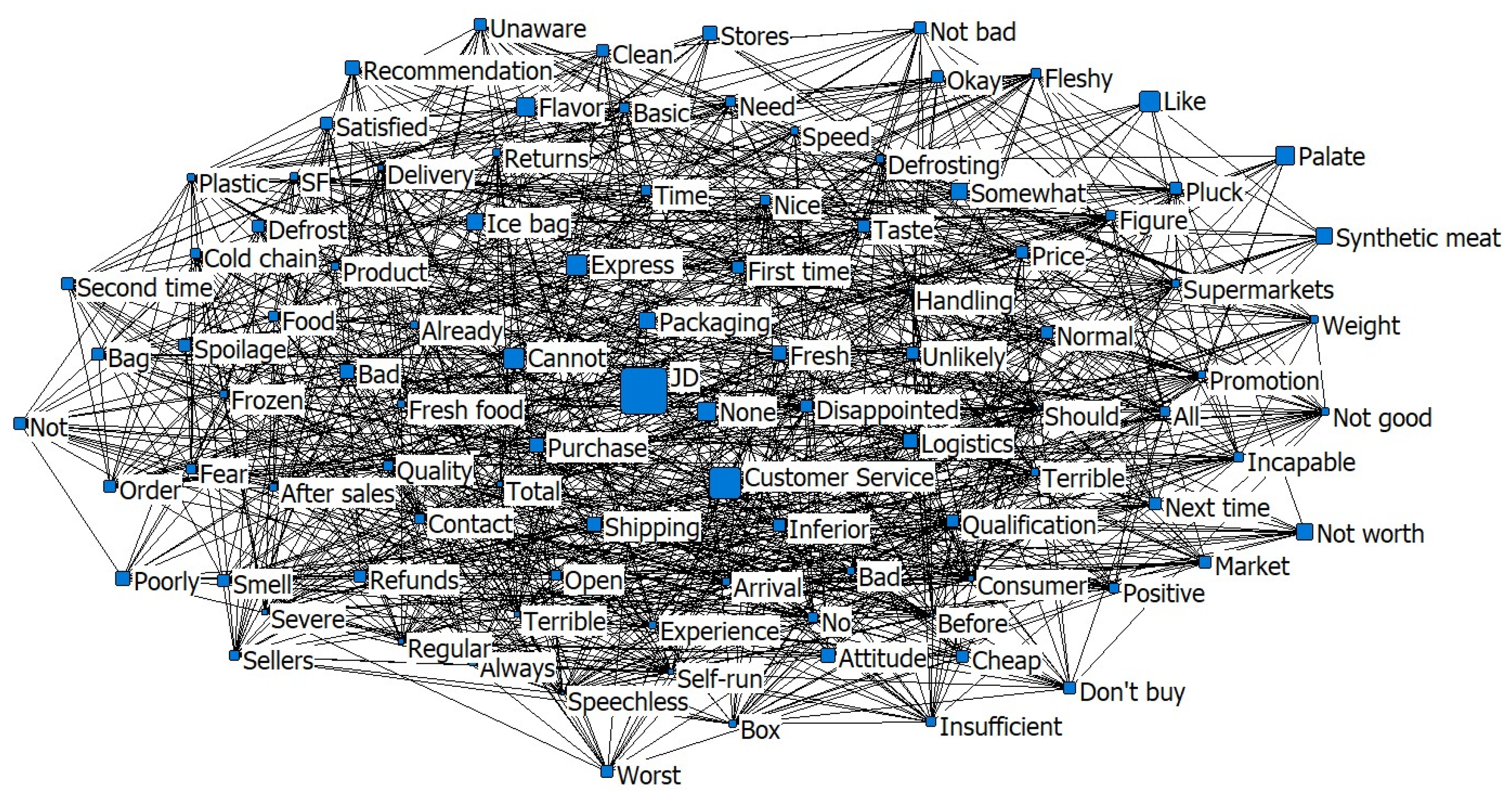
| Raw Comment | Splitting Results | Satisfaction |
|---|---|---|
| hard work of the Jingdong courier, so late during the pandemic is still delivering, thanks. The fish fillets are sized and fresh, with a clear texture, and very satisfied. | hard work Jingdong courier late pandemic still delivering thanks sized fresh clear satisfied | 0.96 |
| Shivering the imported products during the pandemic, the packaging has a negative test mark and a traceability QR code, very reassuring, children especially love to eat. | Shivered imported products pandemic packaging negative test traceability QR code reassuring love eat | 0.96 |
| Affordable price, very tasty, and abalone practice on the package, it’s thoughtful, will return to buy next time. | Affordable price tasty practice package thoughtful return buy | 0.99 |
| One died in transport, fast compensation, kudos to your service, two days to the countryside, everyone can buy with confidence. | died transport fast compensation kudos service two days countryside everyone buys confidence | 0.92 |
| Logistics are too slow, delivered without calling, directly on the self-pickup cabinet, extremely poor attitude, and the product is not fresh. | Logistics slow delivered without calling self-pickup cabinet poor attitude product not fresh | 0.04 |
| It’s unpalatable, the fishy smell can not be described and causes diarrhea | The unpalatable fishy smell can not be described as diarrhea | 0.03 |
| Food is okay, but home delivery is not available, bad for poor logistics! | Food okay home delivery not available bad poor logistics | 0.34 |
| Mean Value | Standard Deviation | Observations | Description | |
|---|---|---|---|---|
| Satisfaction | 0.782 | 0.214 | 586 | Sentiment analysis (Table 1) |
| Time | 189 (Number of 1) | 397 (Number of 0) | 586 | Grouping of DID (Unit, 1 or 0) |
| Treated | 271 (Number of 1) | 315 (Number of 0) | 586 | Grouping of DID (Unit, 1 or 0) |
| Price | 102.550 | 93.151 | 586 | The price of products |
| Reputation | 9.600 | 0.391 | 586 | Store ratings on JD |
| Size | 9.434 | 0.413 | 586 | Product sales (ten thousand) |
| Seed Words | Extended Words by Word2vec |
|---|---|
| Thanks | Gratitude, Thankfulness, Thanksgiving, Conscientious, Reliable |
| Thoughtful | Considerate, Heartwarming, Attentive, Mindful |
| Perseverance | Pandemic, Special Period, Bottom Line, Trust, Laborious, Homage |
| Attitude | Patience, Friendliness, Manners, Enthusiasm, Passion, Service |
| Responsible | Dutiful, Serious, Rigorous, Dedication, Meticulous, Normative, After-Sales |
| Humanization | Home delivery, Convenience, Trouble-free, Worry-free |
| Logistics Commitment | Humanized Delivery | Health Pledge | Pandemic Perseverance | Consumer Care | |||||
|---|---|---|---|---|---|---|---|---|---|
| Express | 0.005 | Convenient | 0.006 | Quality | 0.013 | Courier | 0.005 | Gift | 0.006 |
| Merchant | 0.004 | Shipping | 0.005 | Freshness | 0.009 | Thanks | 0.004 | Attitude | 0.005 |
| Fresh | 0.004 | Home Delivery | 0.005 | Contact | 0.008 | Dedicate | 0.004 | Consumer Service | 0.005 |
| Logistics | 0.003 | Self-run | 0.004 | Package | 0.008 | Homage | 0.004 | Thoughtful | 0.004 |
| Punctual | 0.003 | Flexible | 0.004 | Covid test | 0.008 | Pandemic | 0.003 | Awesome | 0.004 |
| Order | 0.003 | Self-pickup | 0.004 | Certificate | 0.006 | Merchant | 0.003 | Delicate | 0.004 |
| Next day | 0.003 | Stores | 0.003 | Reassured | 0.006 | Caring | 0.003 | Enthusiasm | 0.004 |
| (1) | (2) | (3) | (4) | (5) | |
|---|---|---|---|---|---|
| time × treated | −0.092 *** (0.034) | −0.099 *** (0.034) | −0.100 *** (0.034) | −0.105 *** (0.034) | −0.105 *** (0.034) |
| treated | 0.287 *** | 0.286 *** | 0.275 *** | 0.282 ** | 0.295 *** |
| Constant term | 0.575 | 0.697 | 0.356 | −0.154 | 0.259 |
| individual and time fixed | YES | YES | YES | YES | YES |
| price | YES | NO | NO | NO | YES |
| Reputation | NO | YES | NO | NO | YES |
| Size | NO | NO | YES | NO | YES |
| R-squared | 0.290 | 0.280 | 0.280 | 0.290 | 0.310 |
| Satisfaction = 0.3 | Satisfaction = 0.5 | Satisfaction = 0.7 | |
|---|---|---|---|
| Time × Treated | −0.011 (0.060) | −0.068 *** (0.022) | −0.087 *** (0.012) |
| Treated | −0.014 | 0.303 *** | 0.633 *** |
| Constant terms | −0.337 | 0.018 | 0.438 |
| Individual and Time fixed | YES | YES | YES |
| controls | YES | YES | YES |
| R-squared | 0.220 | 0.230 | 0.170 |
| Time | January 2019 | January 2021 |
|---|---|---|
| time × treated | −0.095 (0.061) | −0.080 ** (0.032) |
| treated | 0.223 *** | 0.255 *** |
| Constant terms | 0.373 | 0.447 |
| Individual and Time fixed | YES | YES |
| controls | YES | YES |
| R-squared | 0.280 | 0.310 |
| Nodes | Degree | Betweenness | Closeness | Nodes | Degree | Betweenness | Closeness |
|---|---|---|---|---|---|---|---|
| Fresh | 494.000 | 54.376 | 93.269 | Poor | 200.000 | 23.769 | 76.378 |
| JD | 834.000 | 59.345 | 97.000 | Ice bag | 373.000 | 33.319 | 85.841 |
| Normal | 303.000 | 29.659 | 78.862 | Already | 325.000 | 36.867 | 85.088 |
| Consumer Service | 629.000 | 50.971 | 93.269 | Quality | 346.000 | 45.046 | 88.182 |
| Packaging | 610.000 | 58.83 | 97.000 | Disappointed | 303.000 | 44.374 | 87.387 |
| Express | 462.000 | 46.931 | 91.509 | Purchase | 313.000 | 38.846 | 86.607 |
| None | 524.000 | 49.079 | 93.269 | Somewhat | 270.000 | 23.518 | 75.781 |
| First time | 437.000 | 44.078 | 89.815 | Time | 335.000 | 37.825 | 86.607 |
| Cannot | 376.000 | 40.165 | 88.182 | Terrible | 149.000 | 19.499 | 75.781 |
| Nice | 313.000 | 35.181 | 84.348 | Price | 248.000 | 26.623 | 77.600 |
Publisher’s Note: MDPI stays neutral with regard to jurisdictional claims in published maps and institutional affiliations. |
© 2022 by the authors. Licensee MDPI, Basel, Switzerland. This article is an open access article distributed under the terms and conditions of the Creative Commons Attribution (CC BY) license (https://creativecommons.org/licenses/by/4.0/).
Share and Cite
Yang, Y.; Ma, Y.; Wu, G.; Guo, Q.; Xu, H. The Insights, “Comfort” Effect and Bottleneck Breakthrough of “E-Commerce Temperature” during the COVID-19 Pandemic. J. Theor. Appl. Electron. Commer. Res. 2022, 17, 1493-1511. https://doi.org/10.3390/jtaer17040075
Yang Y, Ma Y, Wu G, Guo Q, Xu H. The Insights, “Comfort” Effect and Bottleneck Breakthrough of “E-Commerce Temperature” during the COVID-19 Pandemic. Journal of Theoretical and Applied Electronic Commerce Research. 2022; 17(4):1493-1511. https://doi.org/10.3390/jtaer17040075
Chicago/Turabian StyleYang, Yixing, Yanan Ma, Gang Wu, Qian Guo, and Hongbo Xu. 2022. "The Insights, “Comfort” Effect and Bottleneck Breakthrough of “E-Commerce Temperature” during the COVID-19 Pandemic" Journal of Theoretical and Applied Electronic Commerce Research 17, no. 4: 1493-1511. https://doi.org/10.3390/jtaer17040075
APA StyleYang, Y., Ma, Y., Wu, G., Guo, Q., & Xu, H. (2022). The Insights, “Comfort” Effect and Bottleneck Breakthrough of “E-Commerce Temperature” during the COVID-19 Pandemic. Journal of Theoretical and Applied Electronic Commerce Research, 17(4), 1493-1511. https://doi.org/10.3390/jtaer17040075







